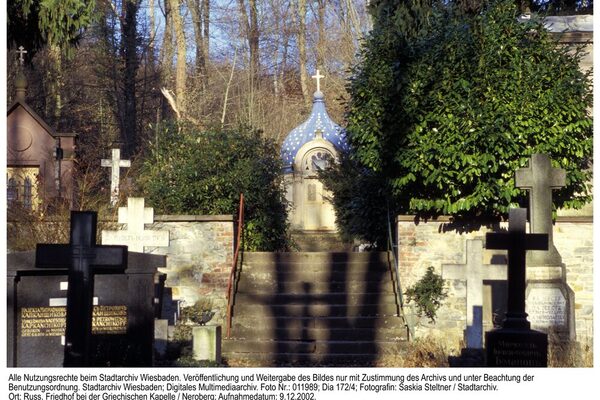Russian cemetery
The cemetery laid out on Wiesbaden's Neroberg in 1856 was the first of its kind in Germany. Philipp Hoffmann designed the cemetery in the shape of a Greek cross, with quarter circles connecting the arms of the cross. A quarry stone wall surrounds the burial site; the simple sandstone portal with a Russian cross is oriented towards the north-south running central axis.
The cemetery was consecrated on 31.08.1856. It became the property of the Russian Church in 1864. Originally, all the graves were to be placed along the walls, while the inner areas were to be designed purely as gardens. However, this concept was soon abandoned. The cemetery was extended for the first time in 1864-67. The last major expansion took place in 1972/73, breaking up the original cross shape on the east side.
The Russian cemetery, which has an enormous wealth of historical gravesites, had a large catchment area that extended as far as German- and French-speaking countries. To a certain extent, its graves reflect Russia's eventful history: while numerous aristocrats and statesmen, including many Baltic Germans, found their final resting place here in the first decades of its existence, after the First World War it was Russian emigrants who had fled to Germany to escape the October Revolution. From the time of the Second World War, we find several graves of Russian forced laborers and displaced persons as well as the tomb of Alexej von Jawlensky.
Literature
Russ, Sigrid: Russian cemetery on the Neroberg, Wiesbaden. In: Historische Friedhöfe in Deutschland. Bund Heimat und Umwelt in Deutschland (ed.), Bonn 2007 [p. 93 f.].

